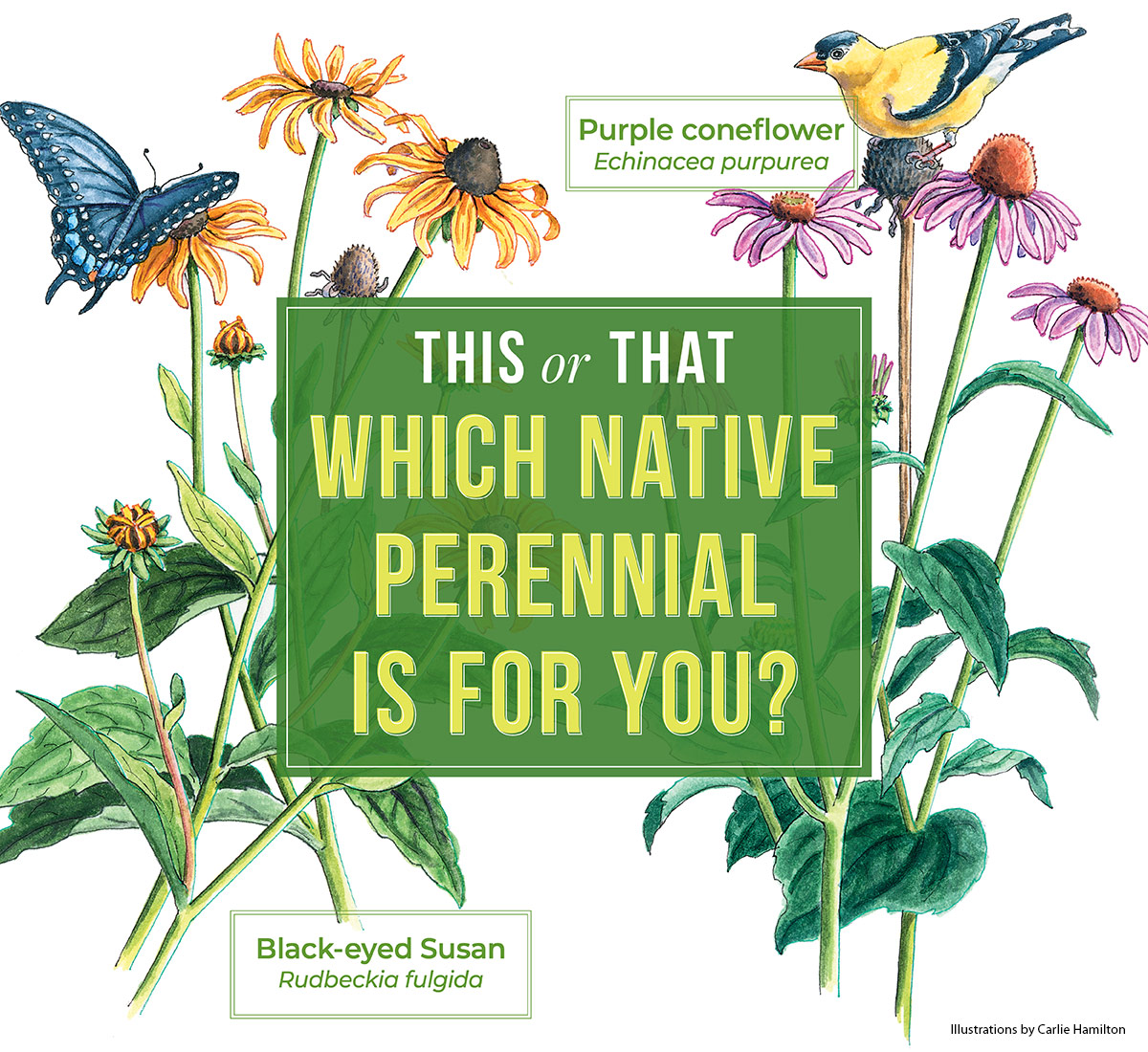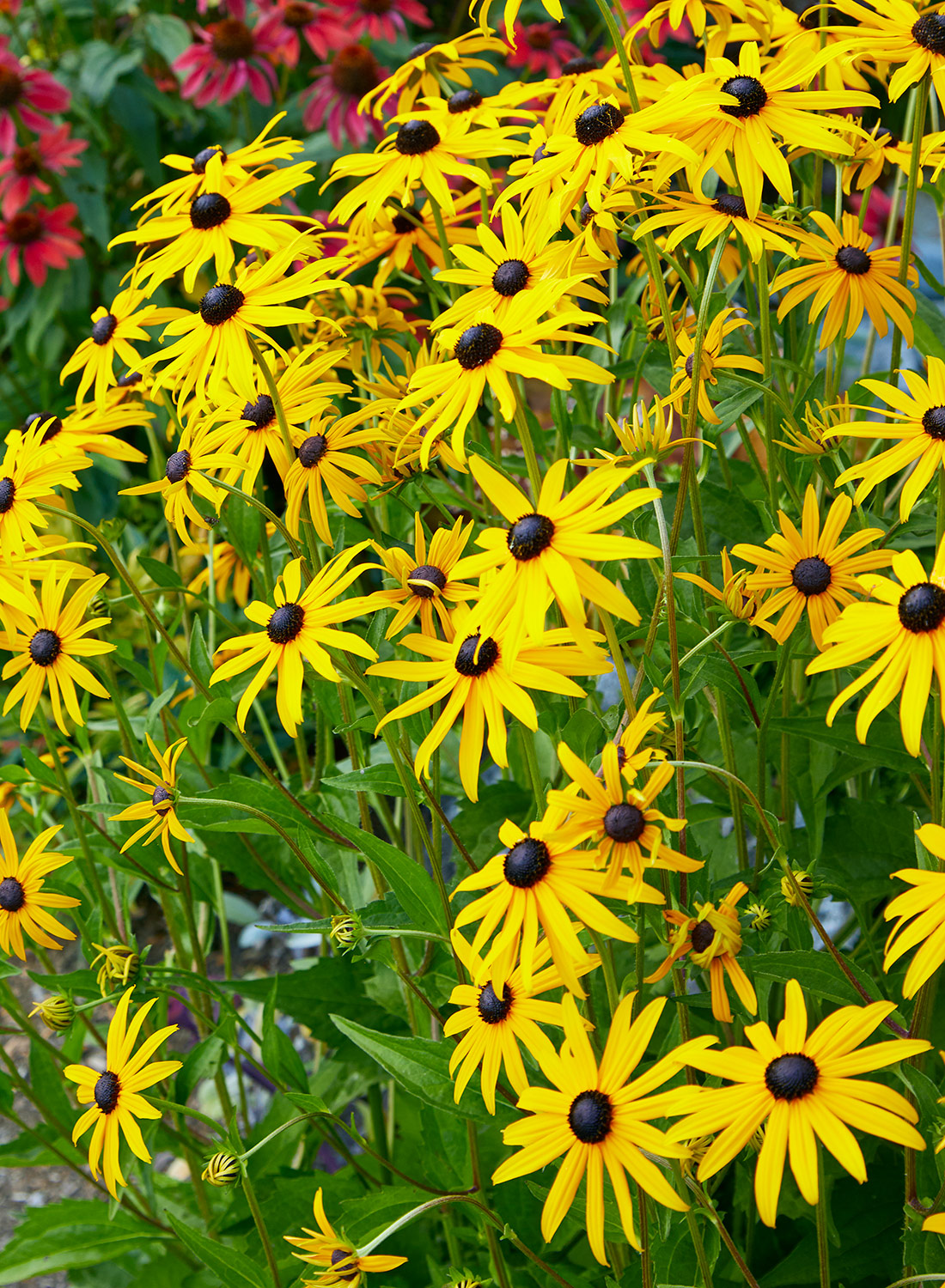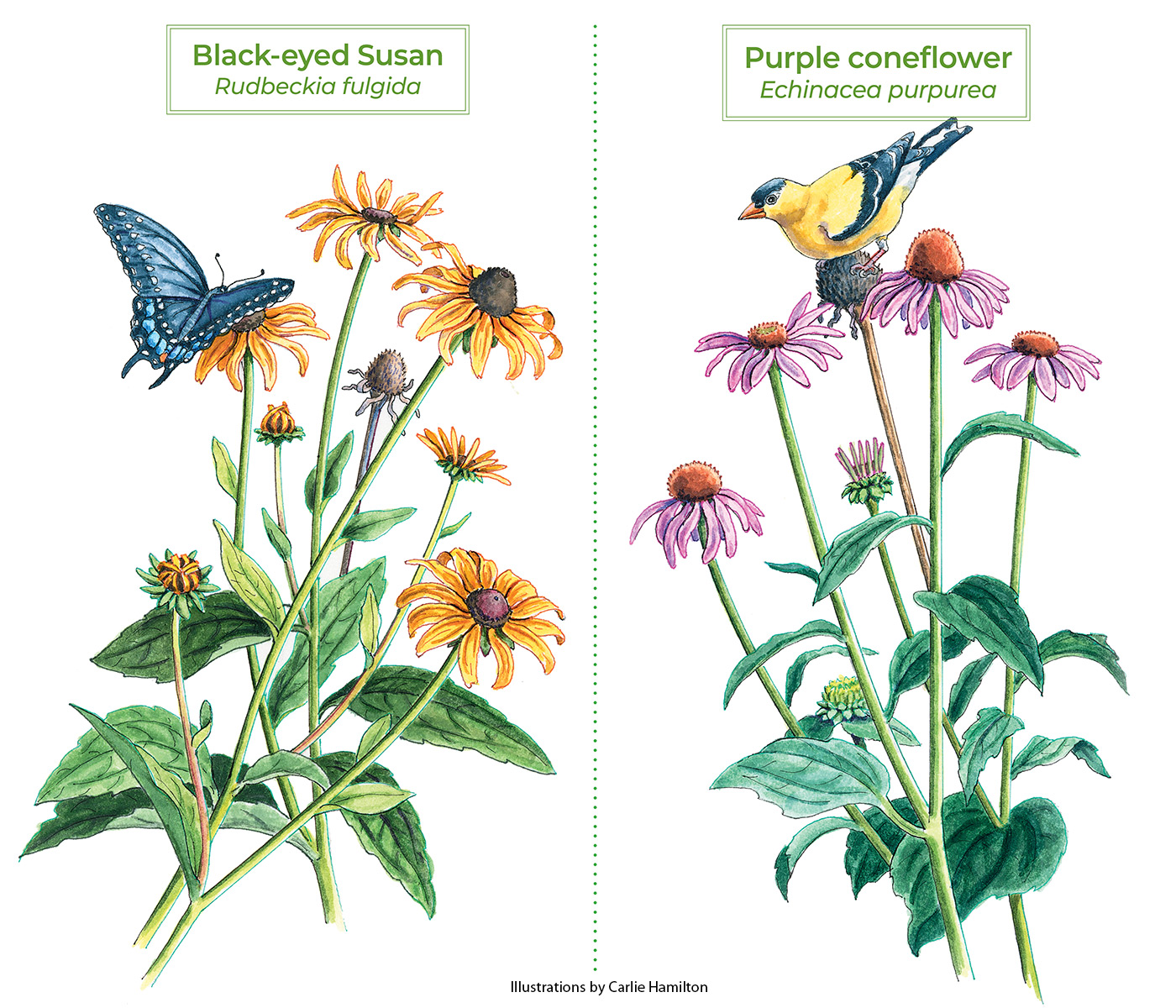
Which native perennial is the right fit for your garden?
Want to add more native perennial blooms to your pollinator garden this year but not sure which plants to choose? Explore the key differences between black-eyed Susans and purple coneflowers to help you decide which native flowers are best for your garden. Both perennials attract pollinators and wildlife with long-lasting, colorful blooms — so whichever you choose, your garden will benefit!

Black-eyed Susan (Rudbeckia fulgida)
- Blooms: Golden daisylike flowers are 2 to 3 inches across with a brown-purple central disk that later forms seedheads.
- Habit: Upright, clump-forming plants grow 2 to 3 feet tall and 1 to 2 feet wide.
- Leaves: Oblong, serrated dark-green leaves alternate up the stem. Those at the base of the plant are larger, have a short petiole (stalk that attaches the leaf to the stem) and are hairy when young. Upper leaves are smaller and attached directly to the stem.
- Hardiness: Cold hardy in USDA zones 3 to 9.
Black-eyed Susan’s daisylike flowers splash vibrant yellow color across gardens from midsummer to late fall. And if you leave the distinctive brown-purple seedheads to ripen on the plants, birds will enjoy them long after the colors fade. In addition, its evergreen basal leaves provide an attractive ground cover through the winter. If all of these great qualities aren’t enough to recommend it, this North American native perennial is also deer resistant!
Where black-eyed Susan works best in the garden
Standing 2 to 3 feet tall, black-eyed Susan is perfect for the front or middle of a perennial bed or pollinator garden border. Plants grow best in full sun in dry to medium, well-drained soil and are cold hardy in USDA zones 3 to 9.
How to grow black-eyed Susan
Black-eyed Susan spreads by underground rhizomes or self-seeding, forming large clumps over time. Deadheading encourages continuous blooming throughout the season and can prevent unwanted seedlings. Divide clumps every three to four years in spring to keep plants healthy and vigorous. Black-eyed Susan endures hot, humid summers and is drought tolerant once established, and it doesn’t require fertilizer to put on a show. A little compost at planting time should provide enough nutrients for it to thrive.
You Might Also Like:
Native Perennials for Any Size Garden
Support Wildlife With Late-Blooming Ironweed
Wildlife-Friendly Garden Plans

Purple coneflower (Echinacea purpurea)
- Blooms: Purple-pink daisylike flowers are up to 5 inches across. Spiny central dark cones are covered in tubular “disk flowers,” which contain the pollen and nectar. After pollination, disk flowers develop seeds.
- Habit: Multistemmed, upright, clump-forming plants grow 12 to 60 inches tall and 18 to 24 inches wide.
- Leaves: Coarse, serrated dark-green leaves are large at the base of the plant and get smaller as they alternate up the stem.
- Hardiness: Cold hardy in USDA zones 3 to 8.
Purple coneflower blooms start appearing in early summer and usually finish by midfall. The distinctive, often drooping pink-purple petals surround a spiky dark-orange center. If you love this bloom shape, try one of the many hybrids available in a variety of colors that include red, orange, green, white and yellow. Many gardeners find both purple coneflower and black-eyed Susan to be deer resistant.
Where purple coneflower works best in the garden
The species grows 2 to 4 feet tall, and cultivars extend the range to 1 to 5 feet. This means that there are options for the front, middle or back of a border. Wherever you put it, bees and butterflies will enjoy the pollen and nectar.
Coneflower growing tips
Purple coneflower thrives in USDA zones 3 to 8 in full sun. Unlike black-eyed Susan, it also will grow in part shade, although plants may bloom a bit less and grow a little taller there. Plants grow best in well-drained soil but also tolerate dry and rocky planting sites. Purple coneflower is also drought tolerant once established and doesn’t require extra fertilizer. Deadhead early-season flowers to encourage reblooming and to help prevent unwanted seedlings, but if you’d like to feed the birds in winter, leave the late-season flowers in place so the seeds can ripen for our feathered friends.
Which native perennial do you choose — Black-eyed Susan or purple coneflower?

You Might Also Like:
Easy Flowers to Grow
How to Attract More Birds to Your Garden
Ultimate Perennials for Sun & Shade















